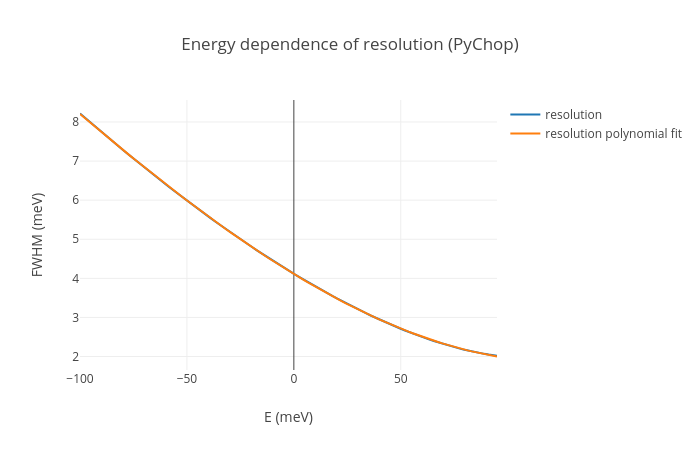ARCS resolution
DGS Resolution tool
The recommended way to examine different resolution conditions for a direct geometry instrument is to use the tool at https://rez.mcvine.ornl.gov
This is a small web application, which provides the experimental and modeling result for resolution (FWHM) values, and should be useful for experiment-planning and quick data analysis.
The website should be pretty straightforward to navigate, but here are some quick explanations:
- First choose the ARCS instrument
-
Click “Help” under the page banner will show some information about the data and modeling
 Figure 1. Expand the help section
Figure 1. Expand the help section -
For each instrument there are two tabs. One for inelastic energy resolution plots, one for elastic resolution plots.
 Figure 2. Inelastic and elastic tabs.
Figure 2. Inelastic and elastic tabs. -
In the inelastic tab, there is a form to choose incident energy and some (chopper) settings. Click the “Calculate” button will calculate the FWHM vs E curve using those settings
 Figure 3. Instrument configuration.
Figure 3. Instrument configuration. -
Below the configuration, there are several tabs. In the “Summary” tab some basic info of the configuration and resolution is given
 Figure 4. Summary.
Figure 4. Summary. -
In the “Plot” tab a curve of FWHM vs E is plotted.
 Figure 5. FWHM(E).
Figure 5. FWHM(E). -
Still in the “Plot” tab, above the resolution-vs-energy plot, click “Polynomial fit …” will show results for fitting the FWHM(E) to a polynomial.
 Figure 6. Polynimal fit for FWHM vs E.
Figure 6. Polynimal fit for FWHM vs E. -
Click the download button below the resolution-vs-energy plot will download a csv file
- The elastic tab shows some plots about the elastic resolution/flux information.
